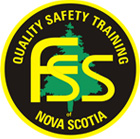Worker Loses Leg Below Knee
Hazard Alert
Worker Loses Leg Below Knee to Rotating Blade of Feller Buncher
The operator of a feller buncher called for assistance after the accumulator spring on the right accumulator arm of the felling head broke. The company’s utility worker, who had 19 years experience, was sent to help repair the spring. The feller buncher operator shut down the hydraulics to the felling head and stumped the blade twice to stop rotation of the blade. While backing the machine to the roadside, the operator tramped some brush with the felling head to clear an area for the repair work. He then rested the felling head on the ground and throttled down the machine to idle in preparation for shutting it down.
The utility worker got out of the cab of his truck once the feller buncher was at the roadside and the felling head was resting on the ground. The operator lost visual contact with the utility worker as he walked toward the feller buncher. The operator was in the process of shutting down the machine when the rotating blade struck the utility worker’s left leg. He was removed by air ambulance to hospital where doctors were unable to save the leg below the knee.
WHY DID THIS HAPPEN?
The utility worker entered the feller buncher’s danger zone before the machine had shut down and the felling head blade had stopped rotating. The feller buncher operator had lost visual contact with the utility worker at the time of the incident.
Recommendations to Prevent a Recurrence
A danger zone is the area around a machine or piece of equipment where a worker runs the risk of being struck by or caught between moving parts or their loads. Some of the most serious injuries in mechanized harvesting occur as a result of danger zone incidents.
Most companies have policies that forbid a worker from entering a specified area around a machine (usually a radius of at least 200 feet) until the machine has been shut down, its implements have been lowered and moving parts such as rotating blades have come to a full stop.
A good communication system between the machine operator and the worker entering the danger zone is essential. A clear and strict danger zone policy that is regularly reviewed along with general safe work practices in and around mechanized harvesting equipment could prevent critical injuries such as this one.
